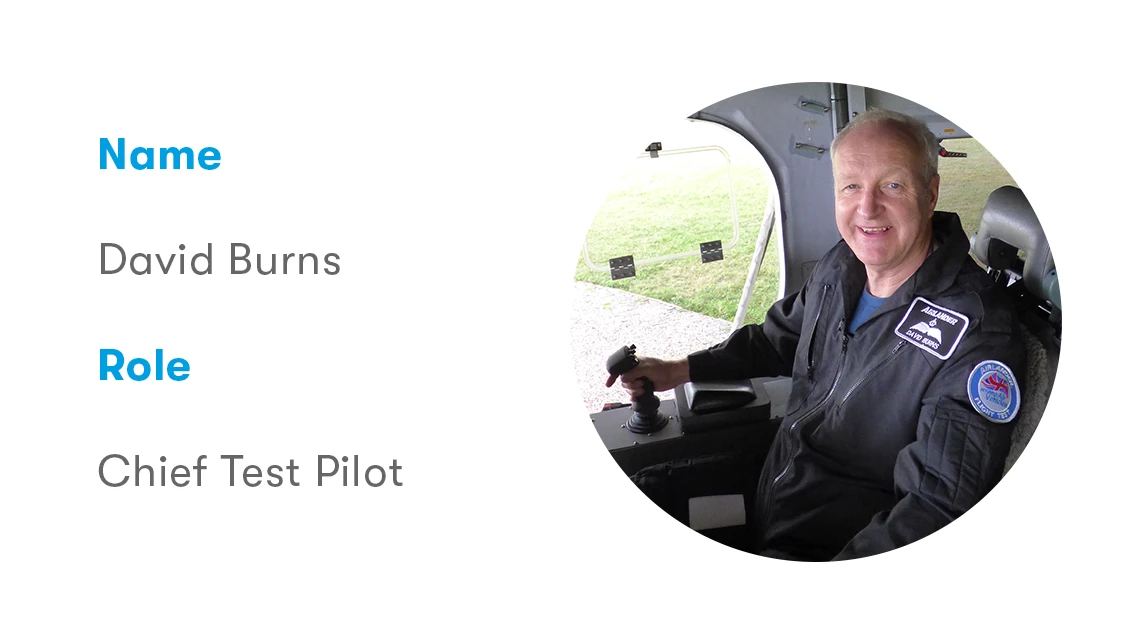Tell us about yourself and your background
I was obsessed with aircraft from an early age and used to visit airports and air shows whenever I could. I went on to study Aeronautical Engineering at university and became a flight test engineer, but soon realised that I wanted to be even closer to the aircraft. I was very lucky to be sponsored by British Airways for a commercial pilot’s licence but there was no job available at the end. I was flying around the highlands and islands for Loganair and saw an amazing sight one day – an airship. Some time later I saw a job advert for a flight test engineer and trainee airship pilot. What could be better? A technical job and having the opportunity to fly something I didn’t know anything about. The job involved learning how to fly an airship, a lot of flight test and development work, and gaining operating experience. It kept me very busy for quite a few years.
What fascinated you about lighter-than-air aircraft?
I did not understand how they worked. I was even more bamboozled when I attended an interview and was shown this huge aircraft (a Skyship 500 airship) inside a giant hangar – it was sitting on only one little wheel. I was even more stunned when I was invited by the attendant to lift it (after the removal of a few ballast bags, of course) into the air, hold it and then bring it back down to ground contact. I was hooked!
As a trained pilot of commercial fixed wing aircraft, hybrid and lighter-than-air aircraft, what are the biggest differences between flying both?
For me the biggest differences are the speed and height at which hybrid and lighter-than-air aircraft fly. I love the view afforded by being in the sky, so although you can see much farther by being at 30,000 feet, you cannot see anywhere near as much detail. In a hybrid or a lighter-than-air aircraft you have the time to absorb more of your surroundings as most of the time is spent much lower, at around 1,500 feet, and flying with visual references. That also means you can make detours on your route to get a better view of what you see coming up before you!
How does it feel to pilot Airlander? What can you see? What can you hear? What can you feel?
Piloting Airlander is in some ways much like flying any large aircraft, you fly the flight deck, and the rest of the vehicle follows along.
The view from the flight deck is fantastic. That is one feature that all aircraft using airship technology have in common as it is essential for ground manoeuvring that you can see all around. This view is also available to passengers in the cabin due to the panoramic windows; this is possible due to the lower flight loads on the structure and no requirement for pressurisation.
The main noise in flight will be from your fellow passengers enjoying themselves, as well as minor wind noise, as the normal cruise mode uses only the rear engines which are over 80 metres behind you on the helium envelope, which does not transmit sound very well. There is of course engine noise during the take-off when the forward engines are running at full power, but this disappears very quickly as the Airlander lifts off and the ground no longer reflects the noise. Even then, there is no vibration as the engines are not attached by any solid structure to the passenger cabin area.
As HAV’s Chief Test Pilot you spend a lot of time in our Flight Simulator. How does the simulator compare to flying in the prototype Airlander?
I do spend a lot of time flying the Flight Simulator which gives a very accurate picture of the flying characteristics of Airlander. This enables me to investigate the handling and performance of Airlander and to develop the drills for all operating scenarios. The computers give it this performance based on the data of the test flying that we completed, plus results of the wind tunnel tests, plus the extra power due to the more powerful engines that we will install on the next aircraft.
What have you and the Flight Sciences team been working on in the simulator recently?
Recently we have been determining the settings for trim and vector for the take-off and the trim, vector and power settings for landing. This will all be included in the Flight Manual to give the pilot a complete picture throughout the operating envelope. In association with those landing trials, we have been confirming that the bow thruster as designed was permitting adequate ground manoeuvring capability in the different wind and heaviness conditions.
Finally, what is your dream journey to pilot Airlander on?
I have always believed that airships and hybrid aircraft like Airlander give a superlative view – and so it would have to be something like touring the pyramids of Egypt or a trip over the ice fields to walk around at the north pole.


